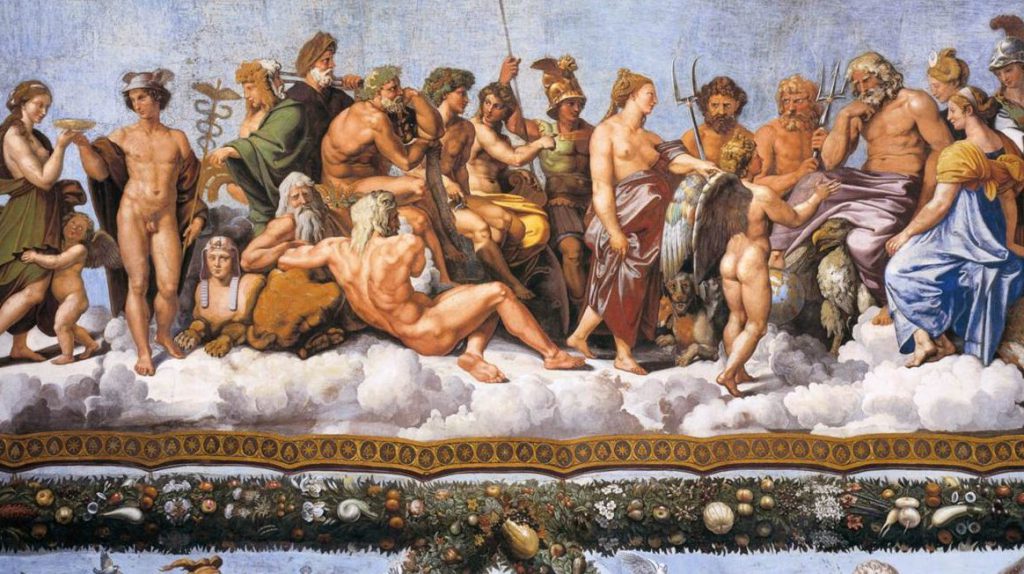
Was the Greek religion monotheistic or polytheistic? Explain your answer and support your explanation with examples. In what ways were Greek art and architecture influenced by their religious beliefs?
INTRODUCTION
Religion has always been an essential part of human history and culture. The ancient Greeks were no exception. Greek religion was a complex system of beliefs and rituals that played a significant role in shaping their society and culture. In this paper, we will explore the nature of Greek religion and its influence on Greek art and architecture.
One of the most intriguing aspects of Greek religion was its polytheistic nature. Unlike many other ancient civilizations, the Greeks worshipped a pantheon of gods and goddesses, each with their own unique personality, powers, and myths. This paper will examine the reasons behind the Greeks’ polytheistic beliefs and how they manifested in their daily lives. We will also explore the impact of religion on Greek art and architecture, from the grand temples dedicated to the gods to the intricate sculptures and paintings that depicted their stories. Through an examination of these topics, we will gain a deeper understanding of the role religion played in shaping Greek society and culture.
BODY
Greek religion was polytheistic, which means that the Greeks believed in multiple gods and goddesses. The Greek pantheon consisted of twelve Olympian gods and goddesses, including Zeus, Hera, Poseidon, Demeter, Athena, Apollo, Artemis, Ares, Aphrodite, Hephaestus, Hermes, and Dionysus, along with numerous other minor deities, nymphs, and spirits. Each god or goddess had their own unique personality, powers, and myths, and was associated with different aspects of life. For example, Zeus was the king of the gods and the god of the sky and thunder, while Athena was the goddess of wisdom, war, and crafts (Greektraveltellers, 2020).
The Greeks’ polytheistic beliefs were deeply ingrained in their society and culture. They built grand temples dedicated to the gods, held elaborate festivals and rituals to honor them, and consulted oracles to seek their guidance. The gods were also a popular subject in Greek art and literature, with countless sculptures, paintings, and epic poems depicting their stories. Overall, the polytheistic nature of Greek religion allowed for a diverse and complex system of beliefs that played a significant role in shaping Greek society and culture.
Greek art and architecture were heavily influenced by their religious beliefs. The Greeks built grand temples, statues, and other structures to honor their gods and goddesses. These structures were not only places of worship but also works of art that showcased the Greeks’ artistic and architectural achievements. For example, the Parthenon in Athens, dedicated to the goddess Athena, is a masterpiece of Greek architecture, with its intricate columns, friezes, and pediments. Similarly, Greek sculptures often depicted the gods and goddesses in lifelike poses and with great attention to detail, showcasing the Greeks’ mastery of the human form (Edubirdie, 2023).
Religion also influenced the subject matter of Greek art. Many sculptures, paintings, and other works of art depicted scenes from Greek mythology, such as the labors of Hercules, the adventures of Odysseus, and the love affairs of the gods. These stories not only entertained the Greeks but also taught important moral lessons and reinforced their religious beliefs. Overall, Greek art and architecture were deeply intertwined with their religious beliefs, and together they formed an essential part of Greek culture and identity.
CONCLUSION
Greek religion played a significant role in shaping Greek society and culture. The Greeks’ polytheistic beliefs, with their pantheon of gods and goddesses, allowed for a diverse and complex system of beliefs that influenced every aspect of life. The grand temples, festivals, and rituals dedicated to the gods were not only places of worship but also works of art that showcased the Greeks’ artistic and architectural achievements. Greek art and literature, with their depictions of the gods and their stories, reinforced religious beliefs and taught important moral lessons. Overall, Greek religion and its influence on art and architecture were essential components of Greek culture and identity. The legacy of Greek religion can still be seen today in the many works of art and literature that continue to inspire and captivate people around the world.
(WORD COUNT: 665)
REFERENCES:
Impact of Religion on Art in Ancient Greece. (2023, February 24). Edubirdie. Retrieved from https://edubirdie.com/examples/impact-of-religion-on-art-in-ancient-greece/
The Greek Gods. Full List and Background. (2020, October 31). Greektraveltellers. Retrieved from https://greektraveltellers.com/blog/the-greek-gods
